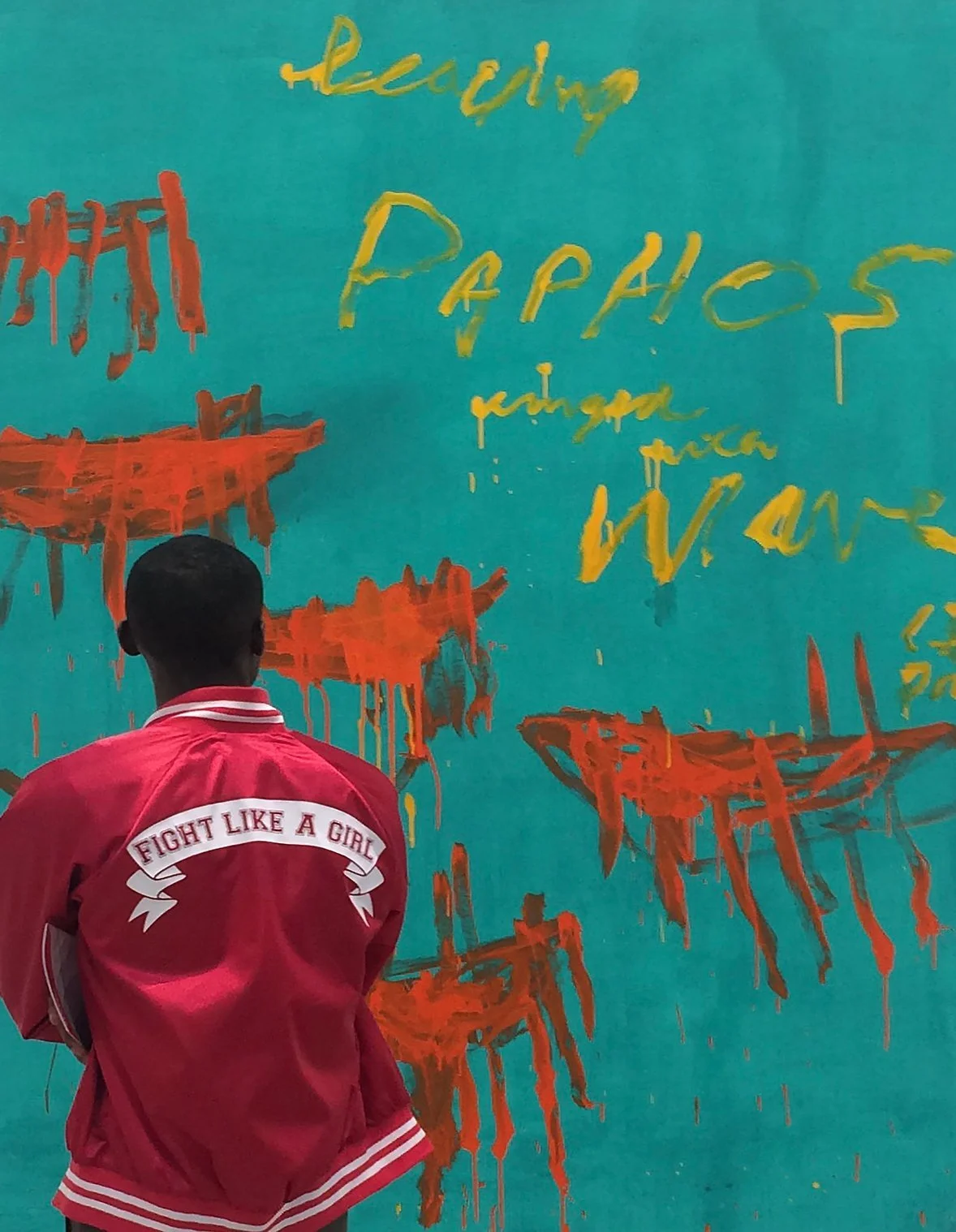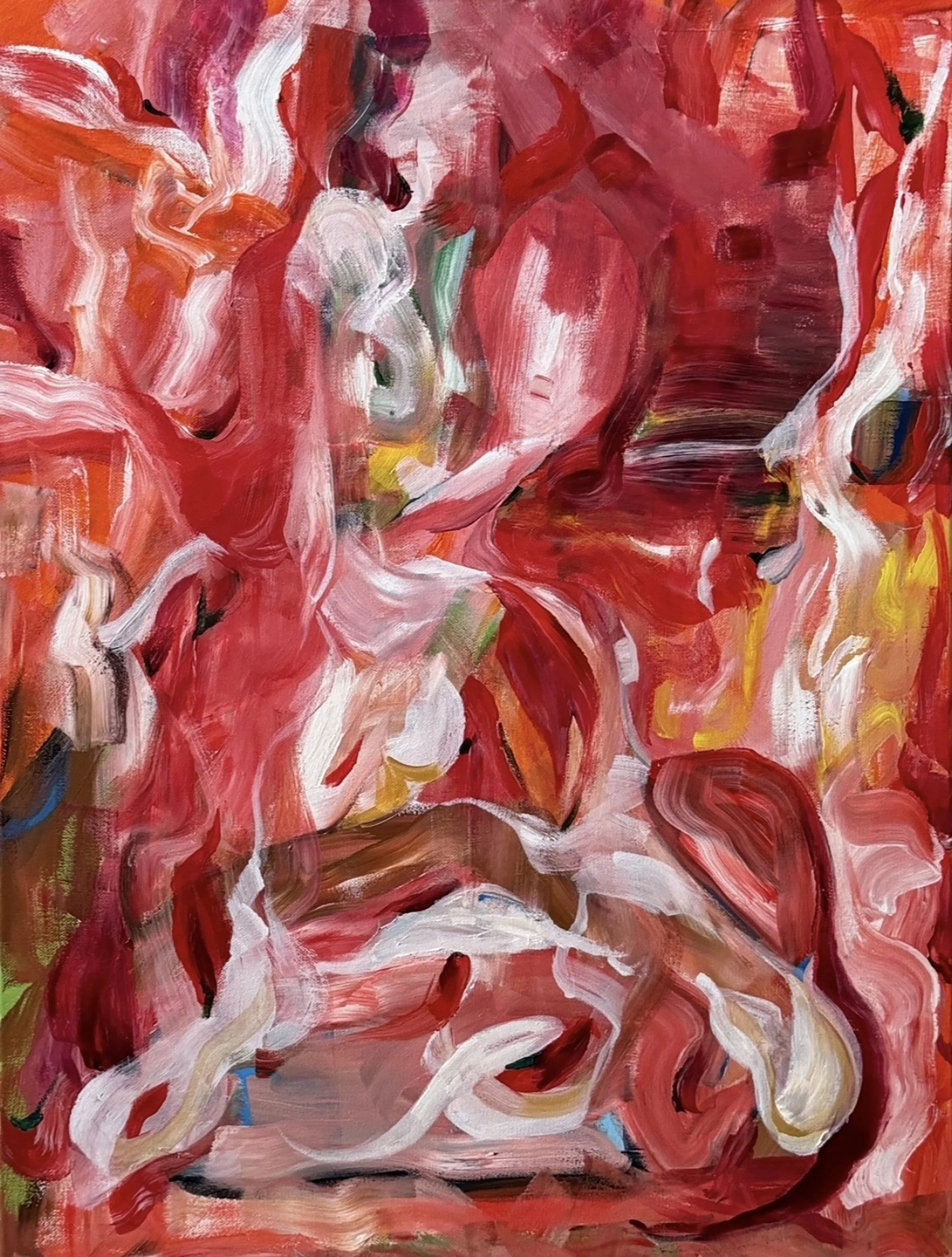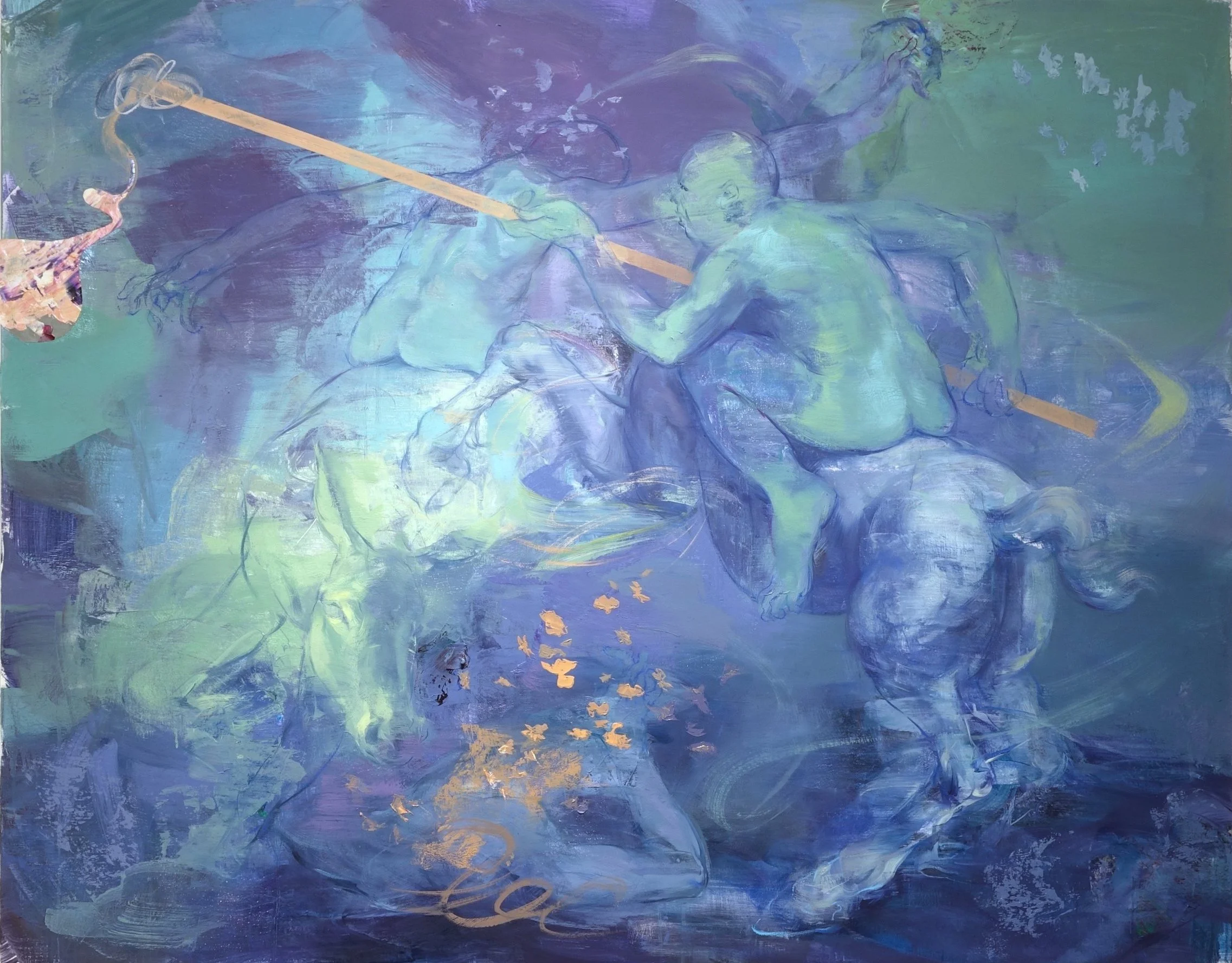10 Questions with Jim Green
Jim Green was born in San Angelo, Texas shortly after World War II. His father, Paul Green, studied Geology at Texas Tech University to prepare for a career in the petroleum industry and his mother, Martha Jeannie, was a housewife and community volunteer. Green developed an interest in visual art at the age of ten. His mother, seeing his early preoccupation with drawing, further nurtured his interest by enrolling him in art lessons to learn how to paint pictures rather than just draw them. Green continued to pursue art in both junior high and high school, copying paintings by the old masters, e.g., Rembrandt, Vermeer, Velasquez, etc. Later he would emulate the styles of the Impressionist and Post-Impressionist. Green would later refer to those particular painters as his best art teachers. In 1966, he attended the University of North Texas, but dropped out after one quarter due to lack of interest. With the Vietnam war quickly escalating and having lost his student status, Green enlisted for four years in the ASA (Army Security Agency) in 1968, three of which he served in Bavaria, Germany intercepting messages sent between East and West Germany.
Upon the completion of his active service, Green moved to Southern California where he attended a small junior college for two years. Later he attended the University of California in 1972, where he majored in Studio Art. Wanting to go beyond the traditional approach to painting, Green began to work with unconventional mediums, methods and different substrates, such as asphaltum, house paint, and etching and painting on large copper panel circuit boards and later pigmented synthetic rubber.
In 1979, Green relocated to Texas, temporarily joining his father's petroleum well servicing business. Continuing to paint, Green entered a painting in a regional art competition held by the local museum, The Museum of the Southwest, which won him first prize. One year later Green was given a retrospective. It was during that time that he met his future wife, who was the museum’s chief curator. In 1986, they married and soon after moved to Dallas, Texas to complete his BFA degree at the University of Texas. In 1990, they moved to Chicago where he devoted himself full-time to painting. Reflecting back on how much he was inspired by Jasper Johns' encaustic paintings, Green created an updated version of encaustics by adding pigment to clear liquid synthetic rubber. This unconventional medium, depending on how much it was thinned, would determine its drying time, opacity and transparency. During a studio visit by the University of Illinois at Urbana-Champaign's art gallery curator, Green was given his first one man show.
Jim Green Portrait
ARTIST STATEMENT
“The works shown here are from my digital painting series 'Superflat.' I've treated the computer mouse as a paint brush and pencil and the computer screen as a blank canvas to create virtual paintings that brings into question the value of traditional painting versus digital mark-making, particularly at a time when so much art is being produced using technological and printing processes.
The process involved in creating each virtual mini-maquette begins with selecting a photo or image that I connect with on some level and use it as a springboard or launching pad. On top of and into it I incorporate personal and sourced photos, fragments of book cover formats and magazine ads, TV images, marks, portions of other artist's paintings, etc. I assign each of the aforementioned to their own layer which can sometimes involve twenty or thirty layers depending on the complexity of the composition of the painting. I then manipulate and edit each layer, e.g., erase parts or all, delete excess layers, move individual images around, change the saturation, color, brightness and contrast, etc.
For me a computer mouse is just another tool that’s an extension of the hand. With proficiency I can guide the mouse’s cursor on the computer screen to apply virtual information just as I would a paint brush on a canvas. I flatten the layers and then save it as a jpeg file until it’s ready to be printed as a large-sized unique on a variety of substrates.” - Jim Green
INTERVIEW
You have a long and varied list of life experiences. Tell us more about your involvement with art and how those different experiences influence and are reflected in your art.
It's actually the other way around. My greatest influences have come from exposure to both contemporary and historical art that I've seen over the years. However, what is reflected mostly in my art is the impact that dozens of artists' styles have had on the direction(s) I've taken my art.
How would you define yourself as an artist?
Purely conceptual. I make ideas visually tangible.
© Jim Green
© Jim Green
You also worked as a Web Designer long before it was a popular occupation. How much did it influence your art, especially considering your digital production?
It was a huge departure from making conceptual art most of my life and then suddenly finding myself immersed in commercial graphics. While I was very proficient with Photoshop, commercially, I would from time to time deviate from using its tools in ways they weren't designed for. (At the time, with the exception of Charles Csuri, the pioneer of digital art and animation, I don't think many artists, if any, were using image editing programs or writing algorithms to create art.) Eventually, I purchased my first desktop computer and started making art using Corel Draw and GIMP, a free online image editing program. Much later, I purchased Photoshop and discovered that working in layers is the perfect method for painting in my present style, plus it gave me the ability to change directions without muddying up the surface. The best part is that I don't require a studio space to work in, and I have no brushes to clean.
What is your creative process like? Can you walk us through a day in your studio?
Every morning I open up saved images on my desktop or iPad; images that I've either sourced from online or personal photos I have taken of something that I've visually or cerebrally connected with on some level. From there, I generally pick one or two images to use as a springboard (a starting point). I add various elements (e.g., marks, strokes, images, photo remnants, etc.), rearranging, manipulating, and editing. If I hit a dead-end, I'll watch something on TV or go for a long walk to clear my head. I can generally look at my work with in an unfamiliar way when I return. I do this back and forth anywhere from 4-6 hours daily.
Where do you find inspiration for your work? Do you have any particular rituals you follow before starting a new work?
I draw my inspiration from literally any and everywhere. Although I wouldn't necessarily refer to it as a ritual, I work in a similar vein as Jasper Johns - "Take an object. Do something to it. Do something else to it.", and so on.
© Jim Green
What themes do you work with? And what messages would you like to convey with your work?
I don't work with themes, nor is my work message-oriented, at least not overtly. Typically I use remnants or whole images because I like the way they look when juxtaposed to one another and the ambiguity they create together, sort of like the lyrics in many of the Beatles' songs. The words didn't always make sense, but they sound good together. I essentially do the same with imagery and let the viewer come up with their own interpretations.
You have worked with several different mediums. Is there anything you would like to experiment with?
I'd love to go back to painting with pigmented synthetic liquid rubber, a medium that I developed when I lived in Chicago to emulate encaustics. Unfortunately due to the high toxicity of naptha, a chemically hot thinner, I had to abandon the method for health reasons. I'm also intrigued by 3D printing machines. The possibilities of what they can create seems boundless.
As an experienced artist, what do you think of the art market? And what would you expect from it?
I think that it's in a good place. There are now venues for every type of art and artist. As for my having any realistic expectations from it, I really don't. Exposure to one's art is largely tied to networking and marketing, neither of which I've spent much time nurturing. Without either, outsiders such as myself find it virtually impossible to gain access to the art world.
© Jim Green
© Jim Green
Did you see any changes or improvements in the market and art community over the past couple of years, since the starting of the pandemic?
In the five years, my wife and I have lived in Los Angeles, and I can remember that, prior to the pandemic, the gallery scene was thriving, and most galleries held a prominent foothold in the art world. Now many galleries are either hanging on by a thread, have closed temporarily or for good, or they have gotten creative and taken to having a larger presence on the internet, and to a much wider audience.
What are you working on now, and what are your plans for the future? Anything exciting you can tell us about?
Because I just started making virtual art in the last couple of years. I feel like I'm just scratching the surface. I wouldn't exactly refer to it as exciting, but I plan to increase the size of my files so I can have each unique printed larger.
























